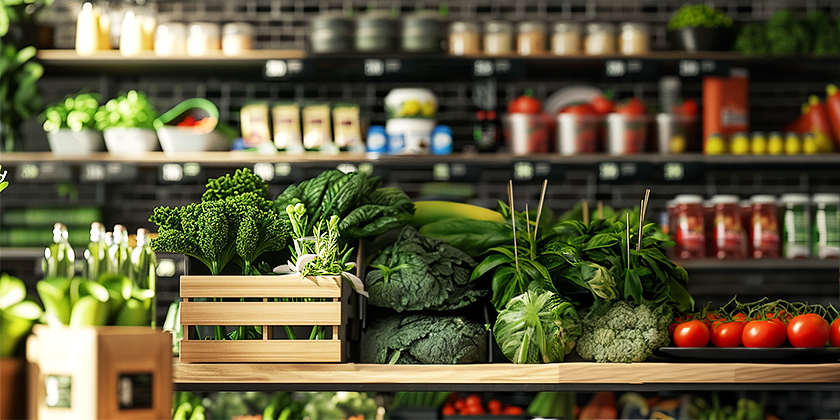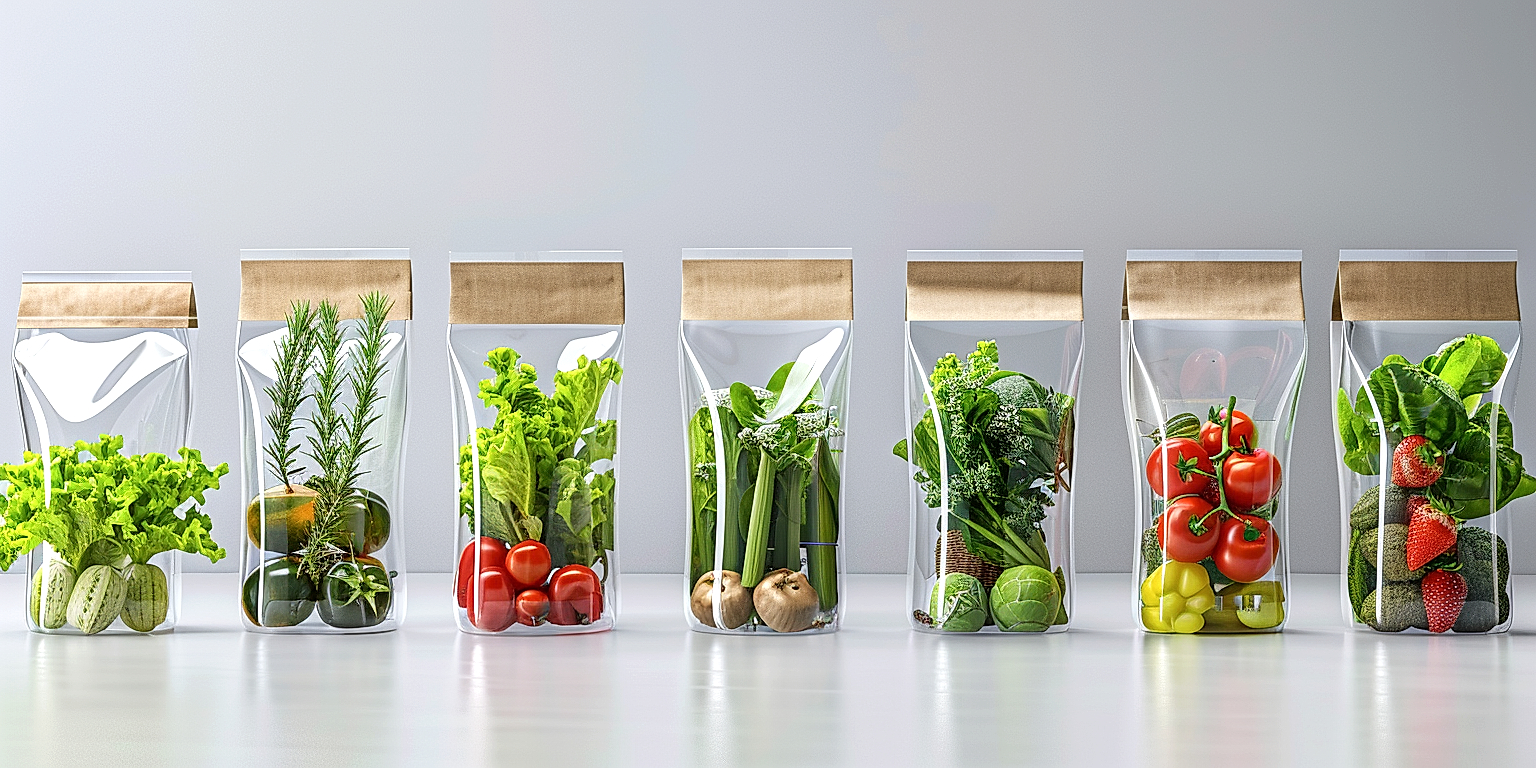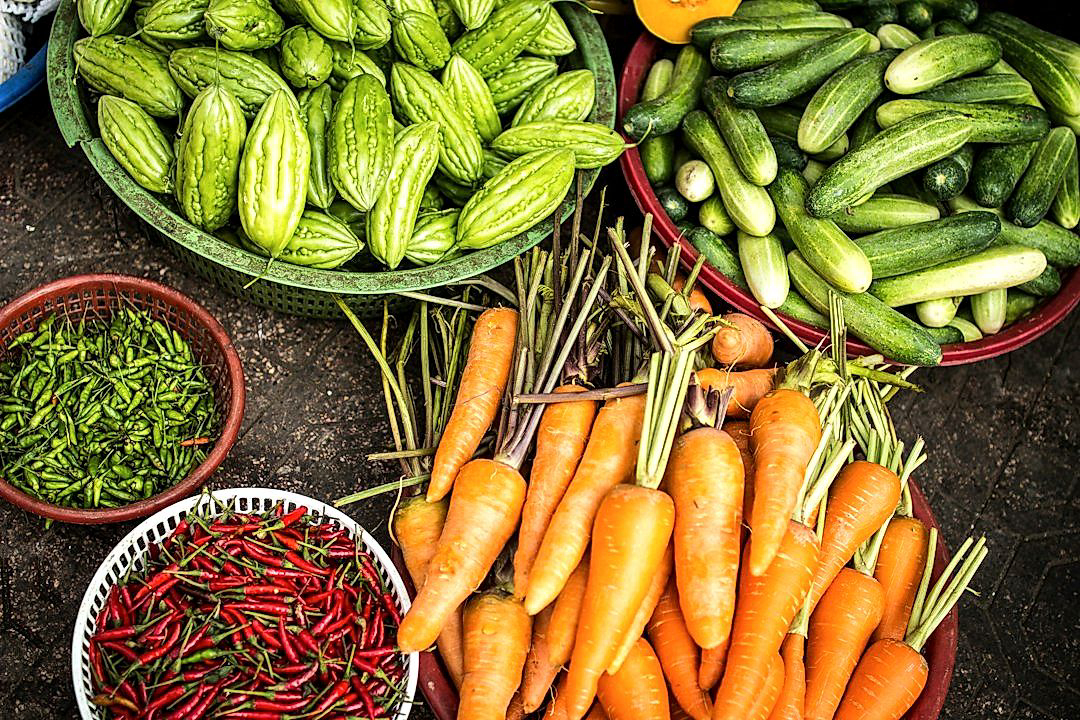In the era of digital transformation, change is inevitable for every industry, including retail.
The growth of technology’s influence and its pervasive reach into our daily lives has significantly impacted consumer choices and habits.
Particularly evident in the produce retail sector, these influences and shifts are molding a new landscape for buyers and sellers alike.
It’s crucial for retailers to understand these changes in consumer behavior to stay agile and competitive.
This article will delve into the major trends that are currently influencing and transforming the produce industry.
But more than this, it will offer insights on how these trends can be navigated, offering opportunities for growth and success.
Contents
Consumer Trends Transforming Produce Retail
1. Demand for Organic and Chemical-Free Produce
The global trend of consumer focus towards health and wellness has significantly amplified the demand for organic and chemical-free produce.
Nowadays, consumers are more cautious about their food consumption, especially with the recent rise in health issues related to diets laden with artificial additives and pesticides.
This awareness has resulted in increased demand for organic produce, free of harmful chemicals and genetically modified organisms (GMOs).
A shift towards organic and chemical-free produce clearly signifies a transformation in produce retail. Consumers’ preferences are now inclined towards healthier and safer food choices.
People are investing more in organic food because they believe it is beneficial for their overall health and the environment.
Consequently, retail markets are adapting and accommodating the growing demand for organic and chemical-free produce, leading to its expanded availability in stores nationwide.
Besides physical retail stores, online platforms are also catering to this surging demand with their easy accessibility and wider variety of organic products.
Far from being just a passing fad, this consumer trend seems to be enduring, with organic food sales continuously increasing worldwide.
A report by the Organic Trade Association shows a consistent growth in organic food sales in the United States, marking an increase of 4.6% in 2019 compared to the previous year.
Around the globe, several countries are investing in organic farming, responding positively to the consumer’s heightened demand for organic produce.
Markets in Europe, notably Germany and France, are pioneering the shift towards organic consumption, with substantial growth in the organic food sector.
Moreover, developing countries, such as India and China, are also joining the organic bandwagon as their affluent urban population’s disposable income increases along with their focus on healthier living.
Such a pan-global surge in demand for organic produce is exerting a significant impact on agricultural practices and food retailing.
It can result in extensive changes in farming procedures, with a greater tilt towards sustainable agricultural practices that focus on preserving natural resources and protecting the environment.
On the retail end, stores are developing dedicated sections for organic produce, making it easier for consumers to find and choose high-quality organic food.
As this consumer trend continues to dominate the produce market, it is paving the way for more sustainable and healthier future food systems.
2. Rise of Online Grocery Shopping
Thought somewhat nascent, the rise of online grocery shopping is a trend that’s transforming the way consumers purchase their produce.
The convenience and ease offered by online platforms have attracted a lot of consumers towards online shopping.
People can now purchase their groceries from the comfort of their homes, at any time of the day or night.
Online grocery shopping has not just redefined convenience but has also given consumers a wider selection of produce than traditional retail outlets.
These online platforms offer a wider selection of products as compared to traditional retail outlets, allowing consumers to explore and try out new vegetables and fruits.
Subscription-based services offered by some online platforms are another attractive feature for consumers.
These services provide consumers with regular deliveries of their preferred fruits and vegetables, ensuring they never run out of them.
Most online grocery platforms provide efficient and reliable delivery services, with some even offering same-day delivery options.
Besides fruits and vegetables, consumers can also purchase various other grocery items from these platforms, making it a one-stop solution for their grocery needs.
Furthermore, the option to compare prices across various platforms helps consumers get the best value for their money.
Online reviews and ratings of products guide consumers in selecting the best produce available.
Additionally, the trend of online grocery shopping encourages healthy eating habits by providing easy access to organic and locally-sourced produce.
Digital platforms also provide consumers with necessary information about the source of the products and their nutritional value.
This trend also aids in reducing food wastage as consumers can order precise quantities based on their needs, rather than buying in bulk.
The rise of online grocery shopping is, therefore, a key trend shaping the future of produce retail by offering consumers unparalleled convenience, variety, and value.
3. Preference for Locally-Sourced Vegetables and Fruits
As part of the larger trend in consumer behavior, a significant shift has been noticed towards locally-sourced vegetables and fruits.
This preference can be seen as a response to a myriad of factors such as considerations of environmental impact, desire for fresher goods, and contributing to local economies.
Compared to produce that has traveled large distances, local products are often fresher as they are typically sold soon after harvesting.
This invariably has the potential to enhance the product’s taste and nutritional content.
Additionally, since local goods require less time in transit, they have a lower overall carbon footprint which is beneficial to the environment.
Consumers are increasingly becoming aware of the effect of their choices on the environment and this consciousness is resulting in preferences steering towards locally-sourced items.
Another reason for this shift towards local sourcing is the consumer’s desire to give back to the community.
By buying from local farmers and producers, consumers are able to help stimulate their local economy and support small businesses.
The recent pandemic has only bolstered this trend as there is a drive among consumers to support their local communities during these difficult times.
Some consumers prefer local produce because of the perceived better quality and safety.
Local producers tend to be smaller and hence adhere to higher standards of quality and safety compared to large-scale producers.
Moreover, consumers feel a higher level of trust with local producers as they have easier access to information about how their food is grown and handled.
Technology has played a crucial role in aiding this trend of sourcing locally.
Online platforms that connect consumers directly to local farmers and producers have gained popularity.
These platforms often provide information about farming practices followed, offering transparency to the consumers.
According to recent reports, demand for locally-sourced fruits and vegetables is expected to continue growing, transforming the produce retail industry.
4. Increased Interest in Plant-Based Diets
Over the past few years, there has been a significant rise in the interest of plant-based diets.
This movement towards a more vegetarian or vegan lifestyle has greatly impacted the produce retail industry.
The demand for fruits, vegetables, nuts and seeds has gone up, forcing supermarkets and local grocery stores to increase the variety and quantity of these items.
Health consciousness is a key factor toward this trend, with consumers seeking foods that not only satisfy their taste buds but also their wellbeing.
Consumers are not only replacing meat with plant-based food, but they are also incorporating more of these foods into their normal diets.
People globally are realizing that plant-based diets can reduce the risk of heart disease, diabetes, and even some cancers.
People around the world are increasingly understanding the health benefits associated with a diet rich in fruits and vegetables, and this has resulted in a significant push toward plant-based foods in the retail industry.
As a result, produce retailers need to consider this increasing demand in their stock planning and product sourcing.
The prominence of plant-based diets is also urging food manufacturers to think beyond the traditional meat and dairy products, and consider creating alternative plant-based products.
These include things like plant-based protein shakes, plant-based yogurt, and even plant-based meat substitutes that offer consumers a wider range of choices.
The rise in plant-based diets is affecting not just what supermarkets stock and sell, but also what farms produce and how they produce it.
This increase in demand for plant-based products is likely to impact how the farming industry operates, possibly leading to an increase in the growth of certain crops.
As consumers trend towards a heavier reliance on plant-based diets, produce retailers are seeing a need to embrace this increasing demand and cater on this reliance.
Essentially, the rise in plant-based diets is not just a trend, but a shift in consumer behavior that has a ripple effect in the produce retail industry.
Therefore, businesses in the sector need to take this into account when planning for the future and strategizing on how to meet these changing consumer demands.
Ultimately, the increased interest in plant-based diets really underlines the importance of focusing on and catering to changing consumer preferences in the produce retail industry.
5. Growing Demand for Pre-packaged, Ready-to-Eat Produce
One trend that is transforming the produce retail sector is the ever-increasing demand for pre-packaged, ready-to-eat fruits and vegetables.
This consumer demand has driven innovation amongst both retailers and suppliers, improving the convenience, variety, and availability of pre-packaged produce.
People around the globe are leading busier lives than ever, and as a result, the ease and convenience of having produce that’s ready to eat right out of the package are invaluable.
Expectations for convenience and freshness have led to the innovation of prewashed, precut, single-serving packages of fruits and vegetables.
We see this trend not only in supermarkets but also convenience stores, health food stores, and even online grocery platforms offering a convenient, ready-to-eat option.
Ready-to-eat produce offerings fulfill a need in consumers who desire to maintain a healthy diet but are pressed for time.
Pre-packaged vegetables such as salad mixes and precut fruits are rising in popularity due to their convenience and can be incorporated into meals with ease.
The ability to purchase pre-portioned and healthy produce can save customers valuable time in preparation and cooking.
In response to the rise in demand, produce growers and retailers have responded by expanding the variety of pre-packaged produce available, including exotic fruits and vegetables.
We now see diverse offerings, such as ready-to-eat beets, pre-packaged pomegranate seeds, and pre-portioned containers of mixed fruits in the produce aisles of retail stores.
This illustrates how retailers and suppliers are constantly innovating to meet the evolving demands of consumers, and facilitate their desire to maintain a healthy diet even with a busy lifestyle.
As this trend continues, we can expect to see even more innovations in the pre-packaged produce sector. We may start to see more unusual and exotic fruits and vegetables available in ready-to-eat formats to cater to adventurous and health-conscious consumers.
The growing demand for pre-packaged, ready-to-eat produce is a solid indicator of where produce retail is currently headed, combined with consumers’ focus on health and wellness, convenience, and the desire for new and varied food experiences.
Consumer trends are indeed transforming how produce is retailed, and it’s a fascinating journey of innovation, convenience, and health-conscious choices for consumers everywhere to watch and indeed, participate in.
The Bottom Line
The transformation of consumers’ grocery-shopping habits reflects an escalating interest in health-centric and sustainable practices.
As the demand for organically grown and chemical-free produce heightens, so does the preference for locally-sourced fruits and vegetables.
This shift highlights a greater consciousness towards environmental sustainability and supports local agriculture.
The surge in online shopping indicates a need for convenience, while the popularity of plant-based diets underscores a health and wellness movement.
Ready-to-eat, pre-packaged produce is another trend showcasing a fast-paced lifestyle in search of healthy convenience.
Ultimately, these trends signal a new era in grocery retailing that oozes health benefits, sustainability and convenience.




